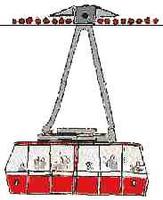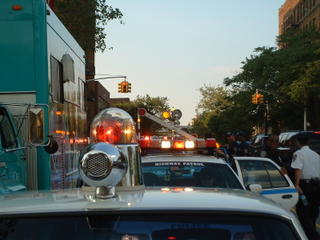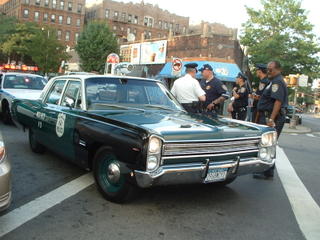
For most of us, the Tram is sort of an amusement park ride for adults, offering a thrilling ride over the East River for only a swipe of a Metrocard. But for many disabled New Yorkers, it represented a shot at independence.
The Roosevelt Island Tramway opened in 1976 as a "temporary" means of transportation for the new residents of Zip Code 10044 while the TA completed work on the new RI station in the 63 Street Tunnel. In typical TA fashion, the station, which Island residents largely opposed, fearing it would destroy the character of the place, was years behind schedule, and even when it did open many preferred the brief, scenic ride that the Tramway provided.
The Tramway opened shortly after the first modern apartments on RI opened. Before then, just about the only reason most of us would have to go there was to visit somebody in one of the two large chronic-care hospitals that the City maintained: Goldwater (at the south end) and Coler (at the north). In 1975 I went there just for that purpose, having befriended several residents of these institutions while working at a camp for disabled adults. Getting to RI involved taking a bus from Queensboro Plaza, then (as now) a seedy collection of fast food joints and run-down office buildings, plus the ugliest parking garage in the Western Hemisphere. The bus wound its way through Astoria before crossing the bridge onto the Island, where it stopped at both hospitals.
Bird S. Coler hospital was clearly the more depressing of the two institutions. At the time there was little housing for folks with severe disabilities, and many ended up in places like this. It was drab and quite sad. Many of the residents spent their days assembling hair curlers in a "sheltered workshop" for a few cents an hour. Still, patients did have the option of going outside and enjoying the beautiful views of the East River.
Goldwater was (and still is) huge - almost a city unto itself, with multiple buildings connected by long corridors. It was much more cheerful than Coler, and the patients I spoke with were more satisfied with the care and recreational activities offered there.
Every resident I spoke with was excited about the soon-to-open Tramway. As one guy put it, "You can get a day pass, hop over to Manhattan and buy a bottle." Just as important to them was the construction of new housing on the Island, all of which was accessible to people using wheelchairs. Many residents of the institutions would go on to get apartments there, where they could assume a level of independence few would even dream of a few years before. Indeed, whatever one might think of the aesthetics of the new developments, they were designed for accessibility at a time when getting a wheelchair around most of the town was a pretty trying experience. (I know; my pal Paco used a wheelchair, and we had a hellova time getting into bars and movies). Even the shuttle busses owned by the new Roosevelt Island Operating Authority were wheelchair-friendly. This was many years before the TA got its act together with lifts on busses, and the low-riding RIOC vehicles where still much more practical for both wheelchair users and those who simply had trouble climbing steps.
every time I do a tour of Roosevelt Island people comment on the large number of people moving about on Main Street in wheelchairs. For many of these folks, the Tramway and the new apartment complexes were their first taste of real independence.



